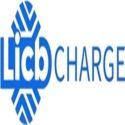Notifications

7 minutes, 2 seconds
-6 Views 0 Comments 0 Likes 0 Reviews

LiCB Charge, a leading EV charger manufacturer in China, offers dependable AC and DC electric vehicle charging stations along with comprehensive charging solutions.
Lithium-ion batteries have revolutionized how we power our modern world. From smartphones and laptops to electric vehicles (EVs), these rechargeable batteries have become the backbone of countless devices thanks to their high energy density, lightweight design, and excellent rechargeability. In the EV industry especially, lithium-ion batteries outperform older technologies like nickel-cadmium and lead-acid, making them the preferred choice.
Each lithium-ion battery consists of multiple cells, where energy is produced through the movement of lithium ions between the cathode (positive terminal) and anode (negative terminal) during charge and discharge cycles. This efficient process enables reliable, long-lasting power in compact formats.
However, to maximize your lithium-ion battery’s lifespan and efficiency—whether in your EV or electronic devices—proper maintenance is essential. This guide covers best practices for charging, storage, usage, and safety to help you get the most out of your batteries.
Before jumping into maintenance, it’s helpful to understand their core advantages:
High Energy Density: Store more energy in less space compared to other battery types.
Rechargeability: Can be charged and discharged hundreds to thousands of times with minimal performance loss (if maintained properly).
No Memory Effect: Unlike nickel-based batteries, lithium-ion batteries don’t need full discharges before recharging.
Despite these benefits, lithium-ion batteries degrade naturally over time. Smart care can slow this process significantly.
Keep the charge level between 20% and 80% for optimal battery health.
Partial charges reduce stress—avoid letting the battery drain below 10% or charging it to 100% too frequently.
Although most modern devices automatically stop charging at 100%, unplugging shortly afterward can help reduce heat and cell wear.
DC fast charging is convenient but generates more heat and stress inside the battery, accelerating degradation. Use fast charging only when necessary; rely on slower charging methods for everyday use.
Track your battery’s run time to notice capacity loss early.
If capacity falls below 80% of original, it may be time to plan for replacement.
Use built-in Battery Management Systems (BMS) or apps for real-time health monitoring.
Watch for signs of damage such as:
Swelling or bulging
Overheating during charging or use
Leakage or corrosion at terminals
If you notice any of these, stop using the battery immediately and consult a professional for safe disposal.
Store batteries around 50% charge to minimize degradation. For EVs left unused long-term:
Avoid leaving plugged in at full charge continuously.
Use “storage mode” if available or periodically recharge to maintain 40–60% charge.
High heat speeds up chemical breakdown and can cause swelling or thermal runaway.
Cold reduces efficiency and can cause temporary capacity loss.
Ideal storage temperature: 15°C to 25°C (59°F to 77°F) in a dry, shaded place.
Modern devices and EVs use Battery Management Systems that monitor health and optimize charging. Regular firmware and software updates can improve efficiency and extend battery life.
Battery run time drops below 50–60% of original.
Charging speed or capacity drops significantly.
Frequent overheating or shutdowns occur.
Physical damage like swelling or corrosion is visible.
Never dispose of lithium-ion batteries in regular trash. Use manufacturer or retail recycling programs that safely recover valuable materials like lithium, cobalt, and nickel.
Ensure your EV’s cooling/heating systems work correctly to maintain optimal battery temperature. Listen for cooling fans or liquid cooling operation and schedule regular maintenance.
Aggressive acceleration and hard braking generate heat and consume more power.
Use regenerative braking to recharge the battery and reduce wear.
Plan routes to avoid unnecessary rapid charging and maintain moderate speeds.
Myth: Fully discharge before charging.
False. Lithium-ion batteries don’t have memory effect. Partial, frequent charges are better.
Myth: Leaving plugged in damages the battery.
Partially true. Most devices stop charging at 100%, but continuous full charge creates stress over time. Unplug when fully charged.
Myth: Cold weather permanently kills batteries.
False. Cold weather temporarily reduces efficiency but won’t cause permanent damage unless extreme conditions persist.
Lithium-ion batteries power much of today’s technology, from personal devices to electric vehicles. While they offer high energy density, rechargeability, and compact size, they still need proper care to maximize their lifespan and safety.
By adopting smart charging and storage habits, monitoring battery health, and replacing batteries responsibly, you can save money, enhance performance, and reduce environmental impact. Whether you’re an EV driver, smartphone user, or fleet manager, these tips will help keep your lithium-ion batteries running strong for years to come.Know more about Google SEO Directory
China EV Chargers EV Charger Manufacturer EV Charging Solutions

